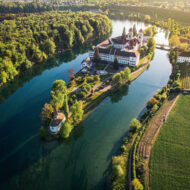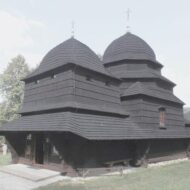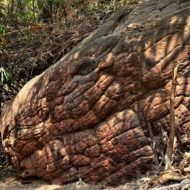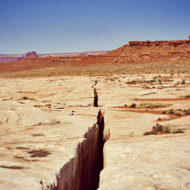Gwalior Fort is a fortress near the city of Gwalior, Madhya Pradesh.India.
Historians have been able to establish that it was built in the eighth century. The Fort and the city have been of great importance in the history of the kingdoms of North India. It is said that the Mughal Emperor Babur (1483–1531) described it as “The pearl in the necklace of the forts of India”.
Historians have been able to establish that it was built in the eighth century. The Fort and the city have been of great importance in the history of the kingdoms of North India. It is said that the Mughal Emperor Babur (1483–1531) described it as “The pearl in the necklace of the forts of India”.
The Fort is often given the epitote of ‘Gibraltar of India’, following the panoramic view of the city from its summit.The Fort, which has an amazing appearance, was built on the long, narrow and steep hill called Gopachal. The fortress covers an area of 3 km², is about 12 meters high and is built on massive sandstone rocks. The walls of the Fort are built along the entire edge of the hill, and although of uniform height, they have an irregular appearance due to the topography of the land on which they are built
its length is about 2 km, width in some places reaches 1 km. Six palaces, six temples, a mosque, eight pools and the rarest monuments of Indian architecture of the 11th century have survived to this day. Near the walls of the fortress in the 15th century, giant Jain statues were carved into the thickness of the rock, reaching a height of 18 meters. Visitors are also attracted by the panoramic view of the city and the surrounding area.
Despite its considerable age, the fortress is well preserved.Visitors are also attracted by the panoramic view of the city and the surrounding area.Today the Gwalior Fortress remains one of the largest complexes of buildings in India.
its length is about 2 km, width in some places reaches 1 km. Six palaces, six temples, a mosque, eight pools and the rarest monuments of Indian architecture of the 11th century have survived to this day. Near the walls of the fortress in the 15th century, giant Jain statues were carved into the thickness of the rock, reaching a height of 18 meters. Visitors are also attracted by the panoramic view of the city and the surrounding area.
Despite its considerable age, the fortress is well preserved.Visitors are also attracted by the panoramic view of the city and the surrounding area.Today the Gwalior Fortress remains one of the largest complexes of buildings in India.
Access : Coordinates: 26.2303, 78.1689 / While the Fort is located about 3 km. from the city of Gwalior, the city is very well connected to other cities of Madhya Pradesh and India by rail, road and air. The Agra-Mumbai highway (NH3) passes through Gwalior. The city is connected to Jhansi by the National Highway NH75, south of the city. To the north it is connected to the holy city of Mathura by the National Highway NH 3. It is located 321 km from Delhi and 128 km from Agra.
/ By train : There are direct trains to Mumbai, Delhi, Calcutta , Chennai, Trivandrum, Indore, Ahmedabad, Pune, Jammu, Lucknow, Bhopal, Jaipur, Udaipur and other major cities. Gwalior is the main station serving most long distance trains.
Highlights :
- Near the walls of the fortress in the 15th century, giant Jain statues were carved into the thickness of the rock, reaching a height of 18 meters.
- It is one of the largest forts in India and its image was used for the issue of a commemorative stamp by the Indian Post.
- It has two main access gates, one from the north-east and the other from the south-west. The ramparts are located along the edges of the hill connected by six towers. It is accessed through the north-east gate for a long access ramp. The main entrance called Pul Hathi (“elephant door”) is accessed after passing through six other doors. In addition to the Hathi Pul gate at the entrance to the Palace, there is another large gate, called the Badalgarh Gate. The Man Mandir palace or citadel is located northeast of the Fort.
- There are several other monuments built within the Fort area. These are: the Chhatri of Maharaja Bhim Singh and Bhimtal, the Scindia School (initially an exclusive school for the children of Indian and noble princes), a renowned institute founded by the late Maratha Maharaja Madho Rao Scindia of Gwalior in 1897, the Gurdwara Data Bandi built in memory of the sixth Sikh Guru Har Gobind.
Activities : sightseeing / photo opportunities / Ancient Culture Study / Long distance walking.
Go next : Gwalijar – a city in central India, in the state of Madhya Pradesh, on the northern edge of the Dekan highlands / Agra (128 km) – Famous for Taj Mahal and the Red Fort.















